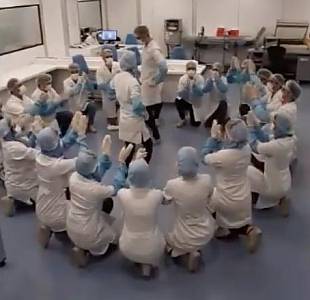In view of Iran’s legislative context, usually only performances of certain traditional, regional dances are possible in either traditional local gatherings, and as parts of major national festivals or arts events.
Like many other nations, ethnic Iranians regard their dances as a manifestation of happiness, group identity, and social solidarity; many Iranian rural, communal, and urban communities are known for their dances.
Interestingly, the COVID-19 pandemic has provided Iranian dance traditions with new meanings; for the past few months, Iranians have begun to dance to consolidate their will in happy gatherings to reaffirm their common goal of persistence in this difficult time.
This movement initially emerged among the country’s medical staff, who were at the forefront of the fight against the virus, but it is gradually gaining popularity on a larger scale as a lever to escape grief and sorrow, and to boost morale. Since the demographic composition of Iran shows up as richly diversified, these spontaneous dances are, usually performed following ethnic patterns.
Interestingly, the same music invokes a variety of ethnic dancing methods in different localities. As a result of this, these collective movements have become more attractive and are also a display of cultural diversity in Iran. In this way, a spirit of unity – solidarity – is now being expressed through the diversity of Iran’s ethnic cultures.
Perhaps in the future, this so-called “corona dance” will develop into a commemorative ritual to respect the collective memory of the COVID-19 crisis in Iran. Like dancing, outdoor music has also started to gain popularity especially in urban public places. Before this, typically, people enjoyed officially sanctioned indoor music performances in music halls.
During the COVID-19 crisis, however, different types of music are being performed on balconies, on roof-tops, through the windows, or using social media. People play and sing together to recreate empathy in enduring difficulties. Similarly, many video clips, animations and songs have been made and have become viral in cyberspace.
For more details and for images of the element, see website
Les désignations employées et la présentation des textes et des documents référencés dans cette plateforme n'impliquent de la part de l'UNESCO aucune prise de position quant au statut juridique des pays, territoires, villes ou zones, ou de leurs autorités, ni quant au tracé de leurs frontières ou limites.
